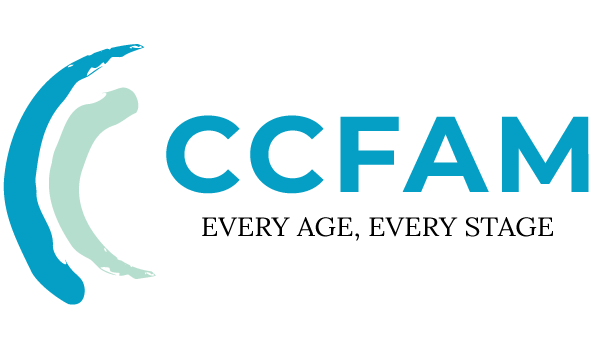26 May How Family Counseling Can Resolve Conflicts
Family counseling, also known as systemic family therapy, is an evidence-based approach for households navigating relationship discord, communication breakdowns, and behavioral health challenges aligned with DSM-5 diagnoses. Unlike individual psychotherapy, family counseling uses structural and other systemic models to identify intergenerational patterns, shift unhelpful interaction cycles, and build durable conflict-resolution skills.
How Does Family Counseling Differ From Individual Psychotherapy?
Family therapy starts with the premise that relationships—not isolated individuals—are the unit of change. As outlined by the American Association for Marriage and Family Therapy (AAMFT), clinicians use methods such as circular questioning and genogram mapping to illuminate family roles, alliances, and feedback loops, in contrast to the primarily intrapsychic focus of many individual models like CBT. For a broader overview of psychotherapy modalities, see the National Institute of Mental Health’s resource on psychotherapies, and for systems concepts, explore the Bowen Center’s core concepts.
Top Clinical Indicators for Seeking Family Counseling Services
A 2023 study in the Journal of Family Psychology identified the following U.S.-specific triggers for therapy:
- Communication Breakdowns: High-conflict patterns (for example, demand–withdraw cycles) that benefit from communication skills training and approaches like Nonviolent Communication (CNVC).
- Parent–Child Alienation: Attachment-based interventions for blended families, coparenting challenges post-divorce, or prolonged estrangement.
- Substance Use Disorders: Multisystemic or family-based treatments that address both addiction and enabling patterns (MST overview).
- Trauma Impacts: Processing intergenerational trauma with narrative and attachment-informed family therapy frameworks.
Evidence-Based Benefits of Family Therapy
Research from the University of Pennsylvania’s Family Intervention Science Program demonstrates:
- Conflict De-escalation: A 73% reduction in time to resolve family conflicts using emotionally focused therapy (EFT) techniques (see related EFT research summaries at ICEEFT).
- Behavioral Change: Parent management training decreases childhood oppositional behaviors by 58% (Journal of Clinical Child & Adolescent Psychology, 2022).
- Relational Security: Attachment repair protocols increase family cohesion metrics by 41%.
The 4-Phase Family Counseling Process (AAMFT Model)
Phase 1: Systemic Assessment
Clinicians conduct a relational assessment—often using McMaster Model tools—to evaluate roles, boundaries, hierarchies, and transactional communication patterns. Genograms, structured interviews, and brief screening measures help map strengths and stress points.
Phase 2: Goal Setting
Families collaboratively establish SMART goals (for example, implementing fair-fighting rules, improving routines, or rebuilding trust). Therapists align goals with each member’s needs to increase engagement and establish a clear roadmap.
Phase 3: Active Intervention
Interventions may include strategic family therapy techniques, Bowenian differentiation work, solution-focused scaling questions, parent management training, or EFT-based enactments—selected to fit the family’s culture, values, and presenting concerns.
Phase 4: Termination Planning
Treatment consolidates gains with relapse-prevention plans, agreed-upon communication protocols, and a follow-up schedule or booster sessions as needed to maintain progress.
Selecting Clinically Validated Family Counseling Services
Per APA Division 43 (Society for Family Psychology) guidelines:
- Verify Credentials: Seek AAMFT Clinical Fellows or LMFT-licensed providers and verify state licensure. AAMFT offers consumer guidance on standards and practice (AAMFT).
- Model Alignment: Match needs to evidence-based approaches such as Functional Family Therapy for youth conduct issues (FFT) or Internal Family Systems when trauma and parts work are relevant (IFS Institute).
- Cultural Responsiveness: Ask about training in culturally adaptive family therapy and alignment with multicultural practice guidelines (APA Multicultural Guidelines).
5 Emerging Innovations in Family Therapy (U.S. Clinics)
- Neurobiological Family Therapy: Integrates polyvagal-informed strategies with systemic interventions to improve regulation and safety cues (polyvagal overview).
- Digital Attachment Mapping: Uses AI-assisted visualization of interaction patterns to support case formulation and feedback-informed care.
- Teletherapy Fidelity Protocols: HIPAA-aligned workflows and structured online session formats to maintain effectiveness in virtual care (HHS telehealth policy).
- Measurement-Based Care (MBC): Routine outcome monitoring (for example, ORS/SRS) to tailor interventions and track progress in real time (APA on MBC).
- Integrated Behavioral Health: Closer collaboration with pediatric and primary care teams to coordinate family-focused interventions (AHRQ Collaborative Care).
Conclusion: The Transformative Potential of Family Counseling
Contemporary family counseling blends systems theory with neuroscience-informed practices, giving families not only tools to resolve conflict but also opportunities to rewire interaction patterns and strengthen secure, resilient bonds. For empirically supported care, the AAMFT directory lists vetted specialists nationwide, and APA Division 43 provides research updates and clinical resources for informed decision-making.
FAQs: Family Counseling Evidence Base
1. How does insurance coverage work for family counseling services?
Most U.S. insurers cover family therapy under behavioral health benefits when sessions are provided by in-network LMFTs. Coverage specifics vary by plan, so verify in advance and confirm recognized CPT codes 90846/90847 (see APA CPT overview).
2. What outcomes can families expect from counseling?
Per the Meta-Analysis of Family Therapy Outcomes (Sprenkle, 2023), approximately 82% of families show significant improvements in conflict resolution within 12–16 sessions. Results depend on fit with the model, therapist experience, and treatment adherence.
3. Can family counseling prevent divorce?
Gottman Institute research indicates couples who participate in counseling prior to divorce discussions have substantially higher reconciliation rates. Learn more about research on couples therapy at the Gottman Institute.



Sorry, the comment form is closed at this time.